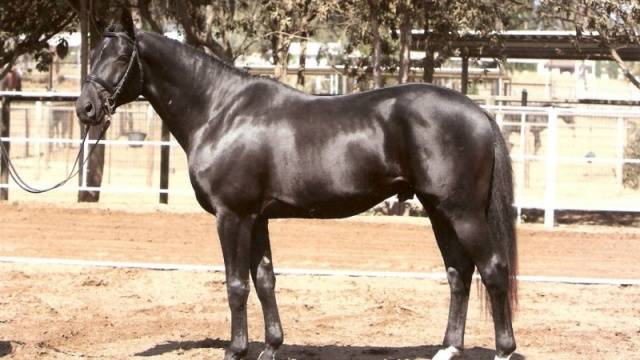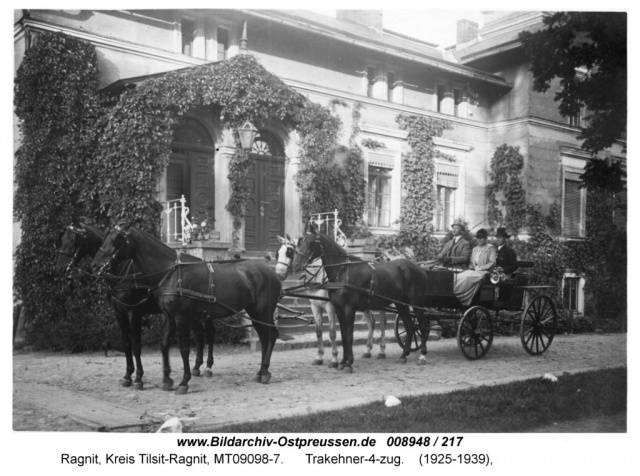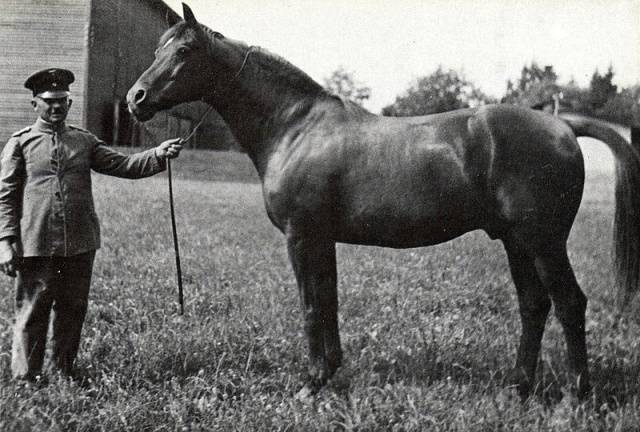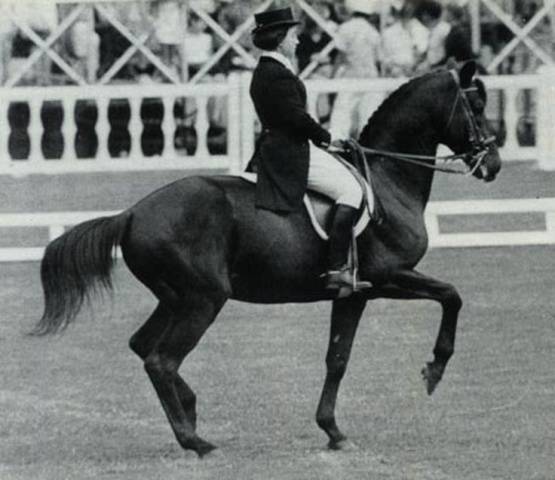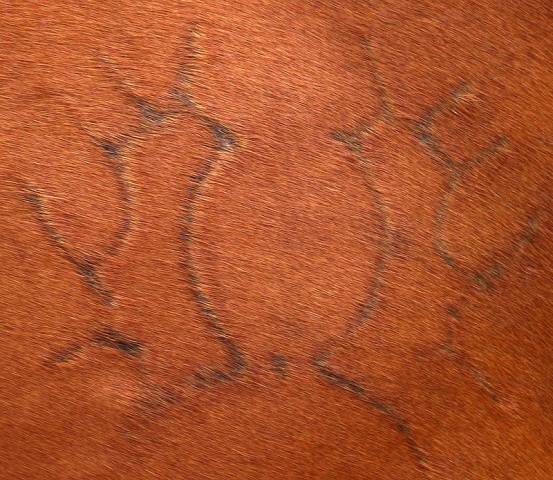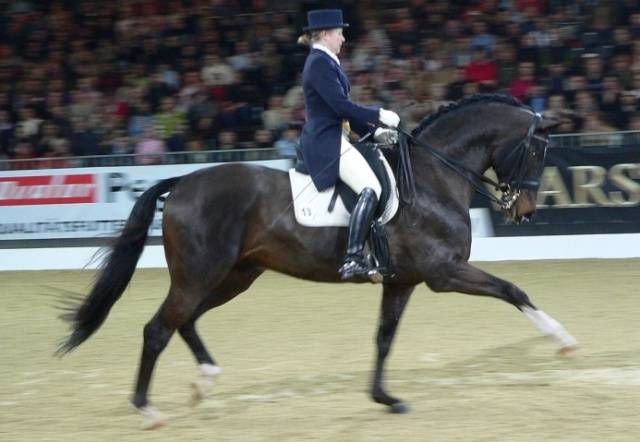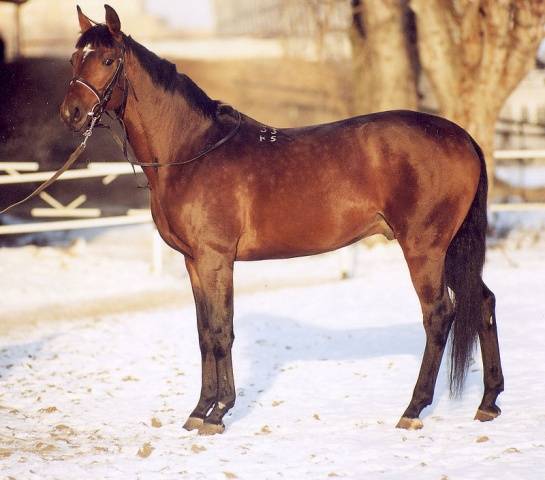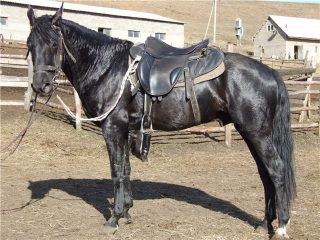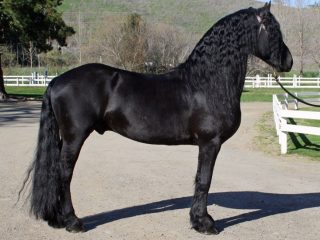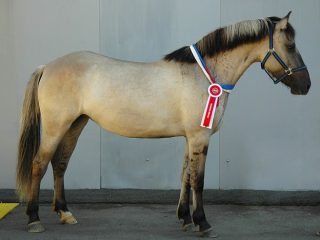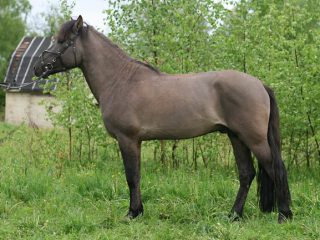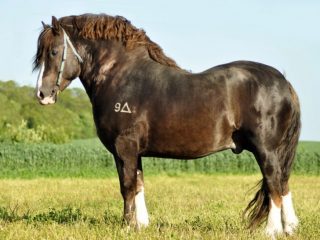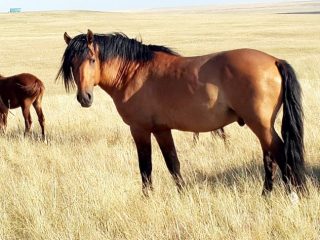Content
The Trakehner horse is a relatively young breed, although the lands of East Prussia where the breeding of these horses began were not horseless until the beginning of the 18th century. Before King Frederick William I established the Royal Office for the Breeding of Trakehner Horses, a local indigenous breed already lived in the territory of modern Poland (in those days East Prussia). The local stock were descendants of the small but strong "Schweiken", and the war horses of the Teutonic knights. The knights also became acquainted with the Schweikens only after the conquest of these lands.
In turn, the Schweikens were direct descendants of the primitive Tarpan. Although evil tongues claim that Mongolian horses also contributed to the future elite breed of horses - the Traken. Be that as it may, the official history of the Trakehner horse breeds begins in 1732, after the founding of a stud farm in the village of Trakehnen, which gave the breed its name.
History of the breed
The plant was supposed to supply high-quality replacement horses to the Prussian army. But a good army horse did not yet exist. In essence, cavalry units recruited “whoever we can find with the required size.” The plant began selection based on local breeding stock. The producers tried stallions of Eastern and Iberian blood.Considering that the modern concept of the breed did not exist then, information about the use of Turkish, Barbary, Persian, and Arabian horses should be treated with caution. These were definitely horses brought from these countries, but as far as the breed was concerned...
The same applies to stallions of the Neapolitan and Spanish breeds. If the Neapolitan at that time was quite homogeneous in composition, then it is difficult to understand which Spanish breed we are talking about. There are still a lot of them in Spain, not counting the extinct “Spanish horse” (not even images have survived). However, all these breeds are close relatives.
Later, the blood of a Thoroughbred Riding Horse was added to the already existing livestock of sufficient quality for that time. The goal was to get a fast, hardy and large horse for the cavalry.
By the second half of the 19th century, the Trakehner horse breed was formed and the Stud Book was closed. From now on, only Arabian and English purebred stallions can be used by “outside” producers to the Trakehner breed. Shagiya Arabians and Anglo-Arabs were also admitted. This situation continues to this day.
This is a first generation cross, where one parent is an English Thoroughbred and the other is a Trakehner. Such a cross will be recorded in the Stud Book as a Trakehner.
In order to select the best individuals for the breed, all young animals of the plant were tested.At the end of the 19th and beginning of the 20th centuries, stallions were tested in smooth racing, which was later replaced by parforce hunts and steeplechases. Mares were tested in harness for agricultural and transport work. The result was a high-quality draft horse breed.
The performance and exterior characteristics of Trakehner horses ideally met the requirements of that time. This contributed to the wide distribution of the breed in many countries. In the 1930s, the breeding stock alone numbered 18,000 registered mares. Until the Second World War.
Photo of a Trakehner horse from 1927.
World War II
The Great Patriotic War did not spare the Trakehner breed. A large number of horses died on the battlefields. And with the advance of the Red Army, the Nazis tried to drive the tribal core to the West. Queens with foals a few months old went into evacuation under their own power. For 3 months, under the bombing of Soviet planes, the Trakehner plant fled from the advancing Red Army in cold weather and without feed.
Of the several thousand livestock that went to the West, only 700 animals survived. Of these, 600 are queens and 50 stallions. A relatively small part of the Trakehner elite was captured by the Soviet army and sent to the USSR.
To begin with, they tried to send trophy herds for year-round maintenance in the steppe in company with the Don breed. “Oh,” said the Trakens, “we are a factory breed, we can’t live like that.” And a significant part of the trophy horses died in the winter from hunger.
“Pfft,” the Donetsk people chuckled, “what’s good for a Russian is death for a German.”And they continued to talk to you.
But the authorities were not satisfied with the death and the Trakens were transferred to stable housing. Moreover, the captured livestock turned out to be large enough that for some time even the “Russian Traken” brand arose, which lasted until the time of perestroika.
Photo of Ash Trakehner breed under the saddle of E.V. Petushkova.
Since perestroika, not only has the Trakehner stock in Russia decreased, but also the requirements for horses in modern equestrian sport have changed. And Russian livestock specialists continued to “preserve the breed.” As a result, the “Russian Traken” was virtually lost.
Meanwhile in Germany
Of the surviving 700 animals in Germany, they managed to restore the Trakehner breed. According to the Trakehner Breeding Union, today there are 4,500 queens and 280 stallions in the world. VNIIK might disagree with them, but the German Union only considers those horses that have passed the Körung and received a license to breed from them. Such horses are branded with the symbol of the union - double horns of an elk. The brand is placed on the left thigh of the animal.
Photo of a Trakehner horse “with horns”.
This is what the brand looks like close up.
Having restored the livestock, Germany again became a trendsetter in the breeding of the Trakehner breed. Trakehner horses can be combined with almost all half-bred sport breeds in Europe.
The main livestock is concentrated today in 3 countries: Germany, Russia and Poland.The modern use of the Trakehner breed is the same as that of other half-bred sports breeds: dressage, show jumping, eventing. Trakens are bought by both beginning riders and top-level athletes. The traken will not refuse to ride through the fields of its owner.
Exterior
In modern sports horse breeding, it is often possible to distinguish one breed from another only by breeding certificate. Or a brand. The Traken is no exception in this regard and its main exterior characteristics are similar to other sporting breeds.
The height of modern trakens is from 160 cm. Previously, the average values were indicated as 162-165 cm, but today it is impossible to rely on them.
The head is dry, with a wide ganache and a thin snore. The profile is usually straight, but can be arabized. Long elegant neck, well defined withers. Strong straight back. Medium length body. The chest is wide, with rounded ribs. Long sloping shoulder blade, oblique shoulder. Long, well muscled croup. Dry, strong legs of medium length. High set tail.
Suit
After the Ashes, many associate the Trakehner horse with a black color, but in fact, Trakehners have all the main colors: red, bay, gray. There may be a roan. Since the breed contains the piebald gene, today you can find the piebald Traken. Previously, they were rejected from breeding.
Since the Cremello gene is absent in the breed, a purebred Traken cannot be Nightingale, Dun or Isabella.
Nothing definite can be said about the character of the Trakehner horse breed. Among these horses there are honest, flexible individuals and those who are looking for any excuse to evade work.There are instances of “pass by and hurry up” and there are “welcome, dear guests.”
A striking example of the evil character of the Trakehner horse is the same Ash, to which one still had to be able to find an approach.
Reviews
Conclusion
The Germans are so proud of the Trakehner breed that the Schleich company produces figurines of Trakehner horses. Piebald and poorly recognizable “in person”. But it's written on the labels. Although collectors of such figurines would be better off looking for a manufacturer with recognizable breeds. As for sports, Trakens are often used in show jumping at the highest level. In the general population of Trakens, everyone can find an animal to suit their taste: from “just ride in my free time” to “I want to jump Grand Prix.” True, the price for different categories will also differ.
